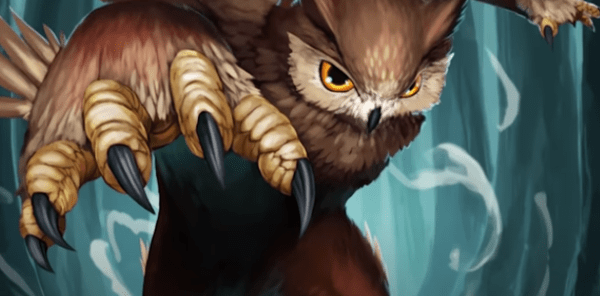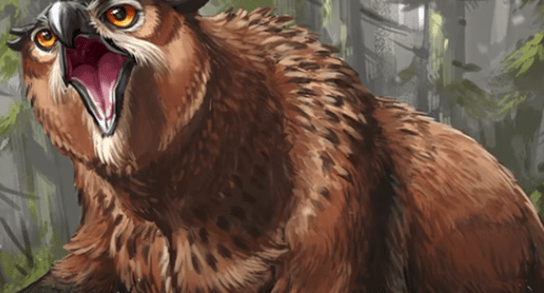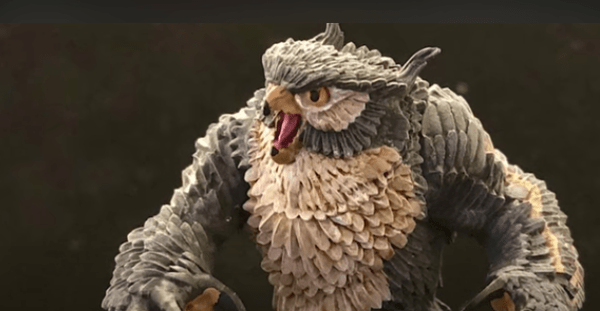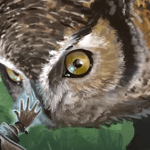Hybrid creatures within the world of Dungeons and Dragons are highly dangerous beasts. From the Centaur down to the Chrimea, many creatures can be vicious while also holding their physical form in the mixed-up way that hybrid creatures tend to turn out to become.
One such creature is the subject of this Article, the Owlbear; A monstrous cross between a bear and an owl, more than capable of causing many life-threatening problems for a party that happens to encounter one.
What are Owlbears in 5e DnD: attributes and description
Attributes
- Challenge Rating: 3 (700 XP)
- Armor Class: 13 (Natural Armor)
- Average Hit Points: 59 (7d10+21)
- Movement Speed: 40 ft
- Skills: Perception +3
- Senses: Darkvision 60 ft., Passive Perception 13
- Languages: N/A
- Proficiency Bonus: +2
Owlbear 5e description
Traits
Keen Sight and Smell: The owlbear has advantage on Wisdom (Perception) checks that rely on sight or smell.
ACTIONS
Multiattack: The owlbear makes two attacks: one with its beak and one with its claws.
Beak: Melee Weapon Attack: +7 to hit, reach 5 ft., one creature. Hit: 10 (1d10 + 5) piercing damage.
Claws: Melee Weapon Attack: +7 to hit, reach 5 ft., one target. Hit: 14 (2d8 + 5) slashing damage.

Advantages and drawbacks of using Owlbear encounters
Advantages
1. The Owlbear has Keen Sight and Smell
While the creature has a low Wisdom Ability Score of 12, the Owlbear can utilize its Keen Sight and Smell to hold an advantage on any Perception Roll that relies on said sight or smell.
Added with their natural +3 modifier to their perception, this can give the Owlbear a higher chance of finding a target they are hunting, such as another NPC or a Player attempting to run away from them.
Having such a skill with this creature makes it much more difficult for a party to attempt to avoid a combat encounter where an Owlbear is involved in any way.
2. High Healthpool for its Challenge Rating.
While it is not the tankiest creature that exists in the Challenge Rating range it is in, Owlbear’s health pool being close to 60 Hit Points makes it quite a challenge for lower-level parties.
This can be especially hurtful if there are other enemies around that can act as either bigger threats than the Owlbear itself or as smaller ones that function more as distractions than live-threatening combatants.
Such pairings can make it easy for an Owlbear to target a single Player Character while the remaining party members are too busy dealing with other combatants.
3. Unable to understand any language
While this would normally be seen as a disadvantage to many people, this can work in favor of the Owlbear. See, without being able to understand any language, a Dungeon Master could rule that certain spells fail or succeed automatically.
Of course, this depends on the DM in question, but for the sake of this point, we will say that the spell succeed automatically. This gives spells like Dominate Monster and Charm Monster a chance to shine since a check to determine the success or failure of the spell would not be necessary.
4. Capable of Multiattacking
The Owlbear, like many creatures at a Dungeon master’s disposal, is capable of multi-attacking against an opponent. This ability allows the Owlbear to attack a target more than once, giving them a higher chance to hit them and deal damage against said target. Giving the Owlbear this ability also extends its turn a little bit, but this is more of a given than anything that is a direct benefit of the creature having a Multiattack.

5. Fast Movement speed for its size
The Owlbear is considered a Large Creature, as its body resembles a bear. As such, one would expect such a creature to have an average movement speed or at least a slower speed to move toward its target.
The Owlbear, however, has a movement speed of 40 ft., which means that it can reach its prey at a faster rate than it can run, albeit slightly. A Dungeon Master could even use this as a way to trick their players by keeping it to slower movements for a while. For example, the Dungeon master could surprise their players by waiting until they’re close enough to be within melee range after a full move, before letting the Owlbear make its full movement towards the player.
This would only work on a newer group of players, however, as they would not directly know the Movement speed of an Owlbear and thus could fall victim to such a tactic.
6. Incredibly high Strength Score
Out of all of the Ability Scores that the Owlbear has, their strength score is the highest at 20. This gives the Owlbear a +5 modifier to their Strength Saving Throws and Ability Checks, which also applies to the Acrobatics and Athletics Skills. This gives it a much higher chance of succeeding in such checks, most notably in any checks made for Grappling.
7. High Modifier to Hit Dice
Surprisingly, the Modifier for the Hit Dice the Owlbear has for its attacks is rather high for a creature with a Challenge Rating of 3. A +7 to hit can make it a challenge to avoid getting hit by the monster, especially when Multiattack is also considered in the attacks.
Such a combination gives the Owlbear a higher chance of dealing damage than if it was a lower hit modifier or if it did not have multiattack and was reduced to a single attack per turn.
Disadvantages
1. Holding a rather Low AC
Regardless of the large health pool, the Owlbear has, the 13 AC does not match the Challenge Rating that the creature has. This means that although the Owlbear can take a decent amount of damage, it is incredibly easy for a player character to be able to hit it.
To combat this, a Dungeon Master could add in more hostile creatures to a combat encounter that the Owlbear is into the encounter to work as distractions or modify the Owlbear to give it a Higher AC.
2. Unable to understand any languages
Although this was stated in the Advantages section of the Article, Owlbear being unable to understand any language in existence can be both an advantage and a disadvantage. Since spells such as Charm Monster or Dominate monster could be ruled to succeed in their roll, the Owlbear could become a big problem when turned against its previous allies.
It also means that a Dungeon Master could rule that the Owlbear doesn’t have anyone that tamed the beast, meaning it could attack anyone that it chooses to, without any real concern as to whether they were friends or foes.

Best uses for Owlbears 5e in a Campaign
A single creature on its own
Against a low-level party, a single Owlbear can be quite a difficult opponent for the members of said party to face down. This can be true for average parties of 4-5 members, somewhere around level 5 or lower.
Although throwing this enemy at a level 1 party isn’t recommended due to the high damage it can do, along with its multi-attack and high-hit modifier, it can be quite a challenging miniboss on its own for a low-level party to face.
A small pack of Owlbears
The Owlbear on its own can be quite the challenge, but a small pack of three to four of the same creature in a single combat encounter can be even more devastating than if alone. A trio alone could be more than a match for an average-sized party of level 5 players, though this could also be a challenging battle for a party going up to their 8th level or even their 9th.
Since they wouldn’t have anything but their kind to act as distractions, it would be wise for a Dungeon Master to have more than one focus on a single, stronger target. In contrast, the third one goes after the party’s weakest member to focus the others’ attention to try and help their friend.
Mixed with other creatures
As stated in previous areas across this Article, the Owlbear can be properly paired with other weaker and stronger creatures than the Owlbear itself. If it happens to be the strongest monster part of the combat encounter, it can act as the major enemy while the smaller, weaker ones act as the cannon fodder against the party.
Said cannon fodder would function as a distraction against the party’s senses for the Owlbear to get a chance to close the gap to whichever player character it happens to choose as its target and get into melee range to attack them.
Beserking Distraction
In a similar light to the last use mentioned, the Owlbear could end up being the weaker creature in a combat encounter, in which it would take the role of cannon fodder. Having this creature, whether it would be alone or with multiple of its kind, act as a distraction against a party would be highly devastating during a combat encounter against a much stronger monstrosity that the party could be facing.
This would especially be true if the Owlbear singled out the weakest player character (based on hit points) to try and reduce the numbers of the party as quickly as possible while the stronger monster went after a stronger PC.
Advice and final thoughts
The Owlbear has many uses during a campaign, though most of the ones presented here were all related to combat encounters. That being said, the Owlbear can be a useful tool to strike fear into a party during a campaign, especially while the members of it are beginning to get higher in level.
I would recommend holding off on using them until the party has reached their 4th level as a minimum, but include them as tough creatures to fight once they get past that level. Once the party reached levels 7-8, it’d be wise to pair the Owlbear with stronger creatures, so then the Dungeon Master can still use it without it being a cakewalk for the mid-to-high level parties that may encounter it on their travels.
Past that and into the double-digit levels, it’s best to seek more difficult enemies or modify the Owlbear to become a tougher foe for the party to face down.
Owlbear 5e FAQ
Can an owlbear be tamed as a pet/mount?
If the Dungeon Master allows this to be done, then a player character could have an Owlbear as a Pet or a Mount to ride. Just be wary of what might happen if you fail your attempts to tame the creature.
Do Owlbears Hibernate?
Since both Bears and Owls (save for Snow Owls) Hibernate, it could be easily determined that the Owl Bear does indeed hibernate. However, a Dungeon master could homebrew the creature slightly in saying that the Owlbear does not need to, so it is truly up to the Dungeon Master’s discretion.
Is there an Owlbear Playable Race for players to make their characters from?
In terms of Published Media, no, There is not a player race for Owlbears that players can make their characters from. However, there are a few Owlbear Races that players can choose from Homebrewed material, so if you want to make an Owlbear Character, it’d be best to ask the DM if such a race is permitted first before making the character any further.
